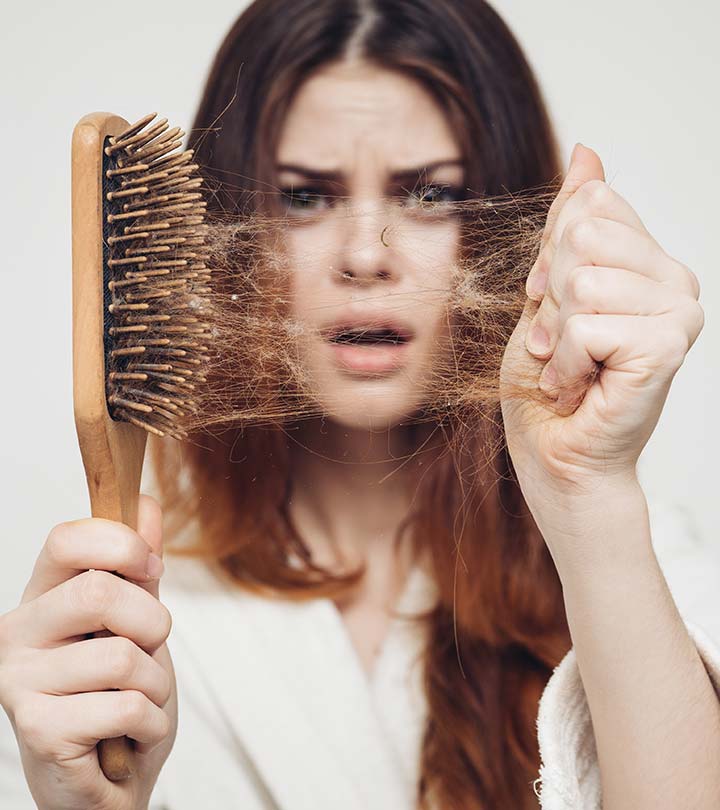Table Of Content

One might argue that Johnson agreed to the haircut but consider the context. He has a very short ticking clock (90 seconds? Really?) and all of his teammates are standing around with bated breath waiting for his answer. This is not a situation conducive to making a checklist of pros and cons or consulting with one’s parents.
Yom Kippur FAQ: All About the Day of Atonement
Hair restrictions are part of an extensive set of modesty rules which is called "Tznius" in Yiddish and Hebrew. Although the hair rules apply only upon marriage, the rest of the modesty rules apply to all ages, including children. These rules dictate that Hasidic Jewish women must keep their whole bodies covered in public at all times, basically except for their hands and face. Their arms will be covered with sleeves which always extend down past their elbows, usually until their wrists.
Ask The Rabbi
I could never cover my wild hair Aileen Weintraub The Blogs - The Times of Israel
I could never cover my wild hair Aileen Weintraub The Blogs.
Posted: Tue, 05 Apr 2022 07:00:00 GMT [source]
According to Jewish law, one cannot derive benefit from anything used in practices considered to be idolatry. There are too many Christian denominations to discuss this issue in any great detail. Suffice it to say that there’s a reason you see so many church-going women wearing hats, a practice that is based on verses in their Bible. Head coverings for women in church were mandatory in Catholicism until the 1960s. Speaking of Catholicism, while no longer universally practiced, nuns traditionally wear a head covering called a wimple.
Israeli American professor to be honored at Columbia commencement amid campus protests
Even though the rules regarding hair are somewhat strict, some allowances are made. Along with payot, there are many other unique Jewish traditions involving hair. Throughout human history, hair has taken on many different spiritual meanings. The sidecurls - called "Payos" - are usually in front of each ear, extending downwards. The beard is often also long, and might be unkempt or untrimmed. Rabbi Jack Abramowitz, Jew in the City's Educational Correspondent, is the editor of OU Torah (/torah) .
Open daily 10 am–6 pm
The rule is that a man must not cut or trim his hair within a special facial region. The boundaries of this prohibited zone are on each side of the face - roughly between the middle of the ear and the eye, below a bone which runs horizontally across there. Many Orthodox Jews simply do not trim their sideburns above this line. Other Jews - primarily Hasidic ones - go further with this tradition. The result is long sidecurls that visibly extend downward.It's interesting to note that the length of the hair is based on scripture, but the style of curls is not based on scripture. The way that many Hasidic Jewish men wear their hair in a curly style is simply a fashion mode that has become common.There are various ways in which the hair can be shaped into curls.

Do The Women in Shtisel Have More Freedom Than The Women in Unorthodox? - Jew in the City
Do The Women in Shtisel Have More Freedom Than The Women in Unorthodox?.
Posted: Mon, 21 Jun 2021 07:00:00 GMT [source]
One way is to apply hair gel and then twist the hair into curls using a brush. Another possible way could be to wrap the hair around a stick or pencil.Jewish male sidecurl rules usually begin to apply immediately at birth. Because the male head covering is not explicitly a matter of mitzvah [commandment], either in the Torah or in the Talmud, there are no requirements as to how it should be made. Presumably it should cover most of the head, but as to the shape or materials to be used there are no limitations.
What is the reason for the sidecurl rules?
Kenneth Byrd, with a BS in Accounting and Management Information Systems and an MBA from the University of Alabama at Birmingham, has over 15 years of experience and is a recognized authority in hair care. Co-founder of Curl Centric® and Natural Hair Box, Kenneth has dedicated himself to promoting ethical and scientifically-backed hair care practices. Rigorous editorial guidelines, industry recognitions, and features in numerous media outlets evidence his expertise. Kenneth’s commitment to transparency, quality, and empowerment has positioned him as a trusted voice in the field, empowering readers to confidently embrace their natural beauty. How closely Jewish men stick to the rules largely depends on their interpretation of the passages.
Keep Up with the OU
They will never wear pants - only dresses or skirts which are long and will extend down below their knees or until their ankles. Also, their feet and ankles will always be covered with socks.These modesty rules extend beyond clothing and appearance. For example, a woman does not touch or make physical contact with any man except her husband.
Yes, antisemitism is rising. But pro-Palestinian protests aren’t the real threat to our campuses
In other words, modern Orthodox men also have payes, they’re just generally indistinguishable from their neighbors’ haircuts. It is for this reason that covering the head has become significant and valuable, not because it has any inherent meaning but rather as a conventional sign of belonging to a certain group of people and of commitment to a certain way of life. On the one hand, if he does not cover his head, he will be regarded by the Orthodox (particularly in Israel) as a deviant from the true path, no matter how observant he is. On the other hand, if he is not fully observant, at least in public, the fact that he covers his head may lead others to see him as hypocritical.
Approximately 21 percent of Israeli Jews are Orthodox, according to a 2016 Pew study, though non-Orthodox religious movements are less widespread in Israel than they are in the United States. More recently, the advent of electric shavers makes it possible to achieve a close shave without a razor actually touching the skin. As a result, many men today do shave their beards while continuing to follow Orthodox interpretation of Jewish law. However it remains customary in most ultra-Orthodox circles to retain one’s beard as a sign of piety. As a dynamic husband and wife duo behind Curl Centric, our passion for curly hair has fueled a transformative journey. From intricate hair care routines to the simplicity and delight of embracing natural curls, Curl Centric is a beacon for the curly hair community, offering resources for hair growth, care, styling, and support.
Indeed, it may cast a shadow of hypocrisy over the entire observant community. Thus, [for a man] covering the head is an act fraught with significance that must be weighed very seriously. In Europe, it was the universal custom among Orthodox Jews, except for some in Germany, to do so indoors and out. In the Near East there was greater latitude in the matter, and many religious Jews only covered their heads for sacred activities.
One view is that shaving your hair was thought of as feminine behavior. Since they don’t have hair to keep the hat in place, they choose hats made from materials that can grip the skin, like suede. If that doesn’t work, they may use velcro or double-sided tape to keep the covering from slipping off. At a time when newsrooms are closing or cutting back, the Forward has removed its paywall.
Nonetheless, the different strains of orthodoxy gradually varied their interpretation of the custom, from covering the hair entirely after the wedding to only covering some. Today orthodox women cover their hair with a sheitel, scarf, bonnet or beret, or a hairnet. In recent times it has become customary for women to cover their hair with wigs, and this can indeed be seen as fulfilling the requirements of the halacha. But this too is a matter of custom and not of definitive halacha.
He was editor-at-large of Breitbart News from 2012 until his resignation in 2016. Pandemic life in the Orthodox neighborhoods of Los Angeles for the most part resembles that of observant Jewish enclaves across the country. The shuls and schools are closed indefinitely, with Torah study and social programming held on Zoom.

No comments:
Post a Comment